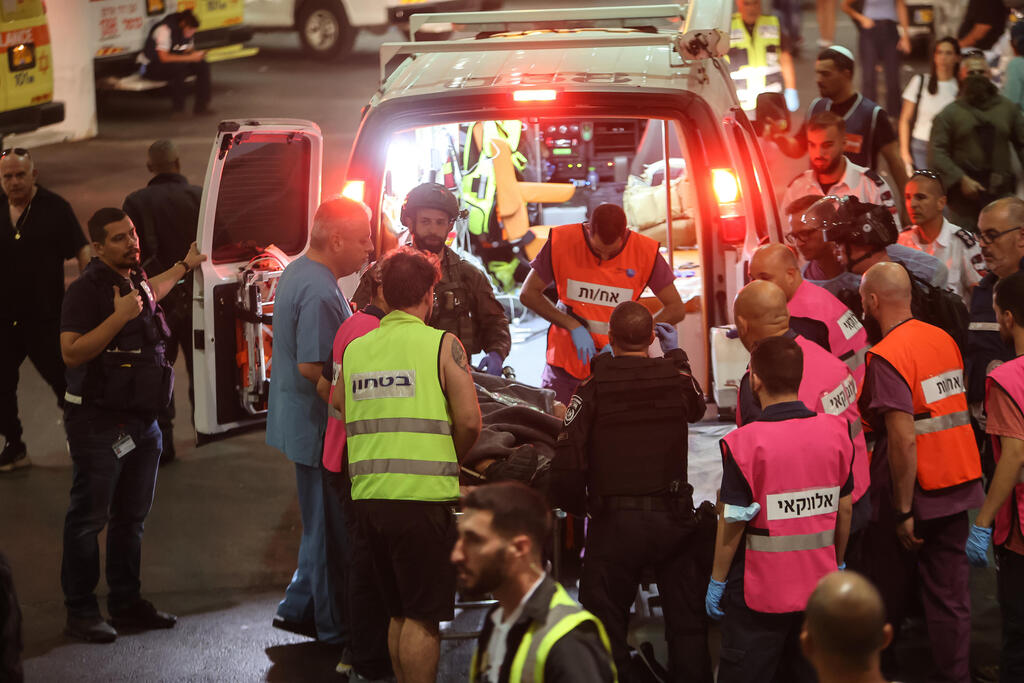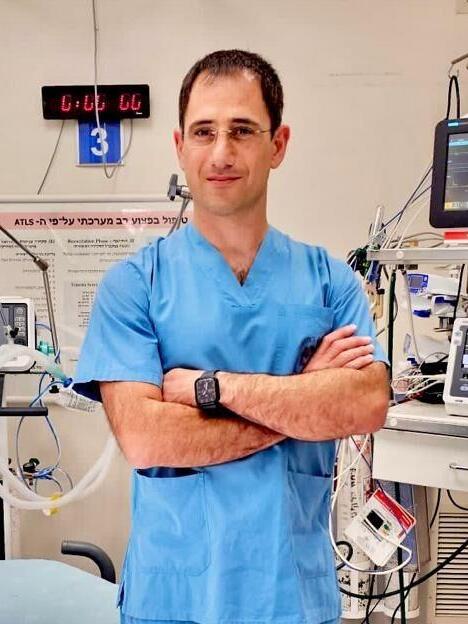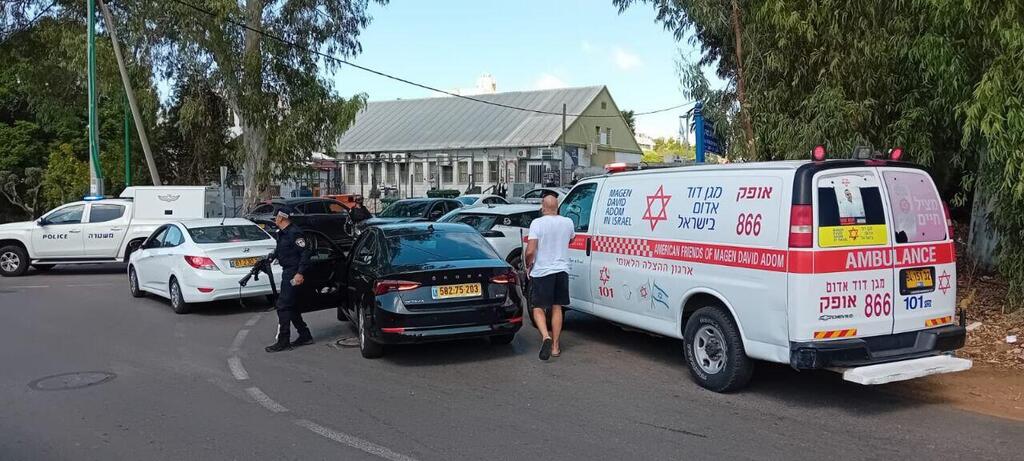Facing the challenges of war, Israeli medical teams are treating high volumes of casualties in varying conditions, relying on clear medical classifications such as “mild, moderate, severe or critical” to quickly prioritize care and make real-time decisions. These classifications go beyond labels—they serve as essential tools in triage.
Dr. Shafir Botner, head of Magen David Adom’s paramedic school, explains that these classifications are designed to communicate a patient’s condition to the public in accessible terms, since most are not medically trained. “For public clarity, we’ve categorized injuries as mild, moderate, severe and also added ‘critical’ in recent years,” Botner said.
3 View gallery


Triage at Barzilai Medical Center in Ashkelon during the October 7 Hamas attack
(Photo: Gil Nechushtan)
According to Dr. Gal Pachis, head of emergency medicine at Shamir Medical Center, this standardized language also facilitates coordination during mass-casualty events, such as the Hamas attacks on October 7-8, 2023, allowing hospitals and the Health Ministry to gauge patient loads and direct ambulances to less-crowded facilities.
“Classifying trauma severity is complex,” Pachis noted. “There are various assessment methods from field to emergency room and inpatient care. Accurate classification aids in managing evacuation urgency, dispersing patients to different medical centers and preparing hospital resources for treatment, as well as for research aspects.”
Both experts emphasize that the responsibility for classifying injuries in the field lies with the senior medical authority present. In civilian scenarios, this is typically a paramedic with Magen David Adom; in military settings, it may be a senior paramedic or physician. In their absence, a certified medic will assume the role.
 Dr. Gal PachisPhoto: Shamir Medical Center
Dr. Gal PachisPhoto: Shamir Medical CenterHow are injury severity levels determined? Dr. Botner explains: “A minor injury is non-life-threatening and unlikely to cause disability or damage to vital organs—like a cut on a finger or a bruise on the knee. Moderate injuries may not be immediately life-threatening but could lead to significant disability or damage to critical organs within hours or days.”
A severe injury, he says, involves immediate life risk. “For instance, a gunshot wound to the abdomen in a conscious person who is still talking to me poses an imminent danger, with the risk of death within minutes or hours. A critical injury, however, involves immediate life-threatening damage with very low survival chances.”
In addition, psychological trauma is commonly documented in mass-casualty incidents in Israel. “These individuals have no physical injuries,” Botner notes, “but we classify them as such only after confirming there are no physiological injuries, though sometimes it co-occurs with a physical injury.”
 Dr. Shafir BotnerPhoto: Magen David Adom
Dr. Shafir BotnerPhoto: Magen David AdomThe process is multifaceted, according to Dr. Pachis, as multiple factors shape the classification. “Once the hospital is alerted about a traumatic injury or mass-casualty event, we consider factors like the injury mechanism. For instance, blunt trauma, such as from a car accident or fall, differs from penetrating trauma, like shrapnel or gunshot wounds. A person who falls from a 20-meter height with chest injuries has a higher likelihood of severe injury.”
Age is another key factor. “Certain ages—infants, young children, the elderly and pregnant women—carry higher risk,” Pachis adds. “Other factors include the body areas affected and physiological signs like pulse, breathing, oxygen saturation and blood pressure. We consider all these elements to classify the injury accurately, guiding us on where to admit the patient, whether to a general ER unit or a trauma bay equipped with advanced treatment and monitoring. This system is in use daily, not only in wartime.”
3 View gallery


Emergency teams at the scene of a terrorist shooting, in Jaffa, Tel Aviv
(Photo: Jack GUEZ / AFP)
In military settings, injury classification differs significantly. "The military doesn’t use terms like mild, moderate, severe or stable," explains Dr. Pachis. "Instead, injuries are labeled as ‘urgent’ or ‘non-urgent.’ For instance, any injuries involving shrapnel to the neck, head or torso are automatically classified as urgent for evacuation. Later, the hospital may find these wounds are either superficial or deep enough to require surgery."
The classification system also affects evacuation priorities. "We need to determine who to evacuate first, which guides our field triage process," says Dr. Botner. “In the field, we focus solely on life-saving treatments and rapid hospital transfers, where definitive care in surgery can save lives.”
3 View gallery


Emergency teams at the scene of a terrorist stabbing attack, in Hadera, northern Israel
(Photo: Magen David Adom)
For example, he notes, "If there are 10 casualties, we prioritize the critical patients for immediate evacuation to the closest hospital. In cities with multiple hospitals, we distribute casualties according to injury severity: critical patients go first to the nearest hospital, followed by moderate, mild and finally, those suffering from shock.”
Globally, systems differ by country, but hospital teams use a standardized scoring system, Dr. Pachis says. “To assess trauma severity and predict outcomes, we use the international Injury Severity Score (ISS). The higher the ISS, the more severe the injury. Every trauma patient admitted has their ISS calculated to provide an objective severity measure.”
Get the Ynetnews app on your smartphone:



